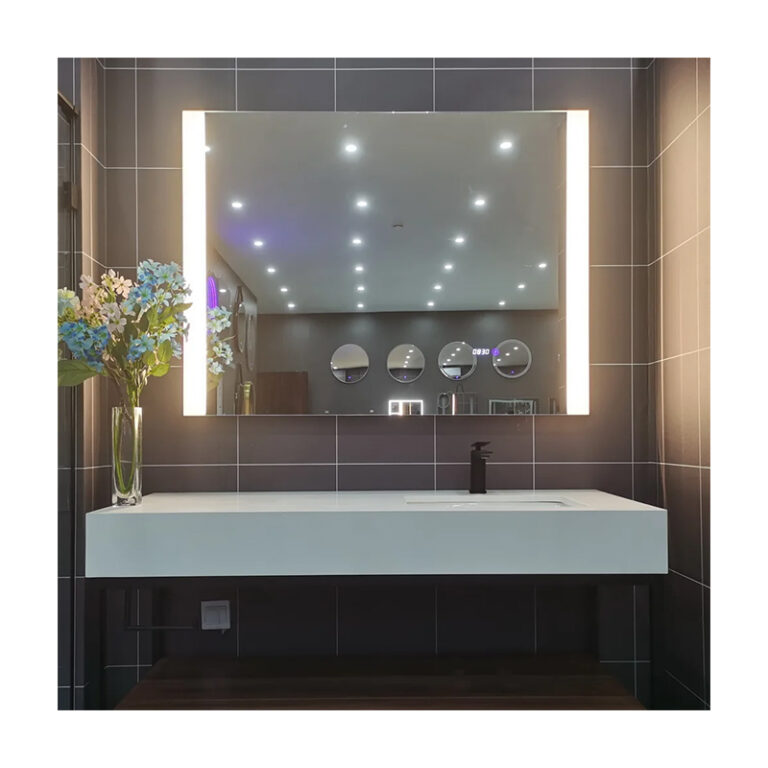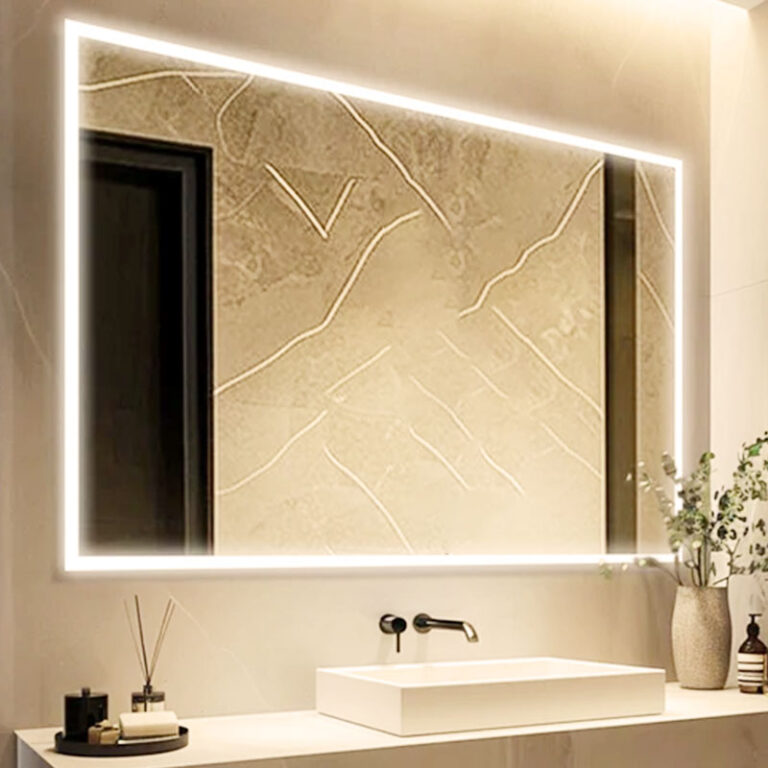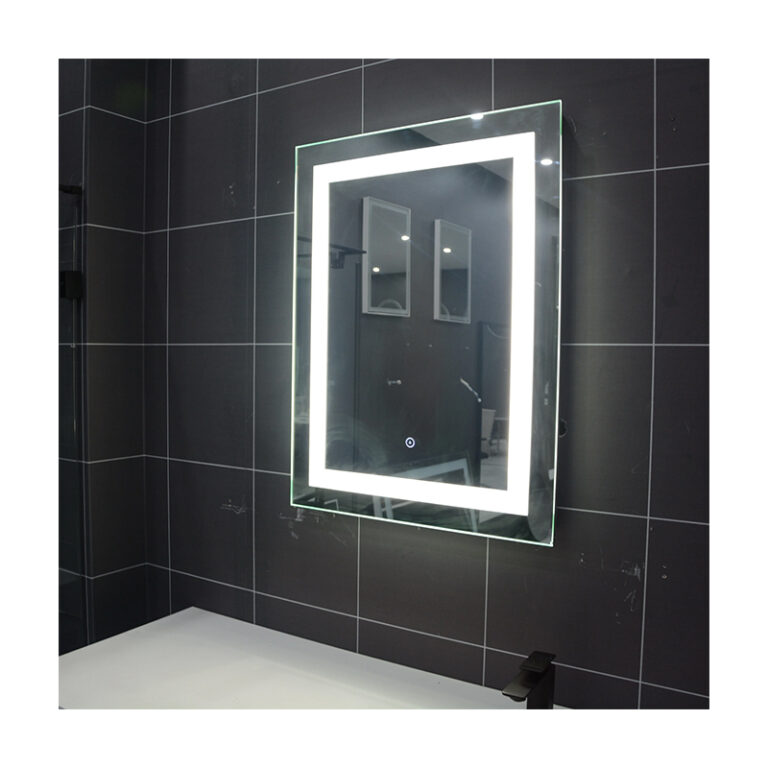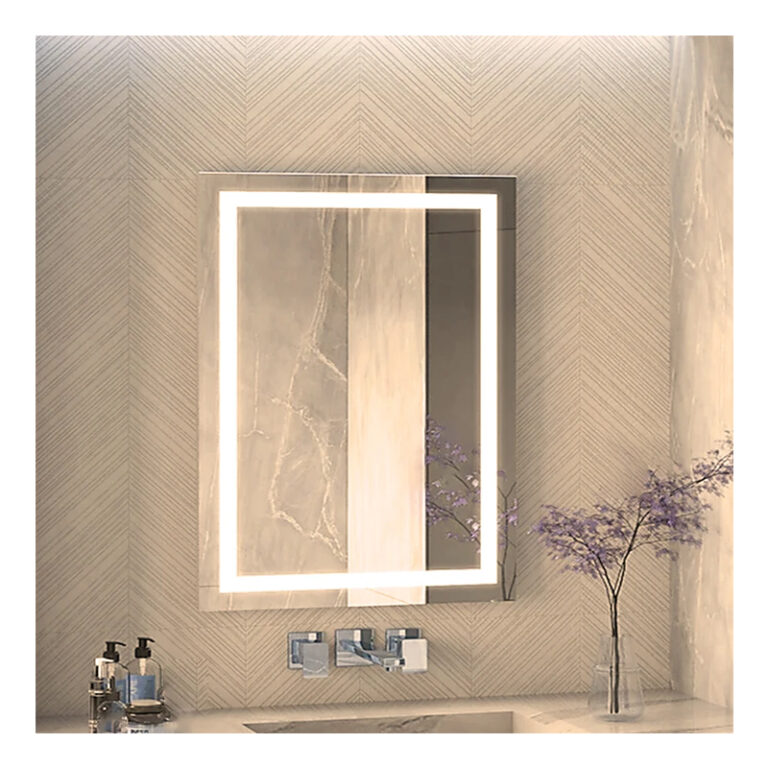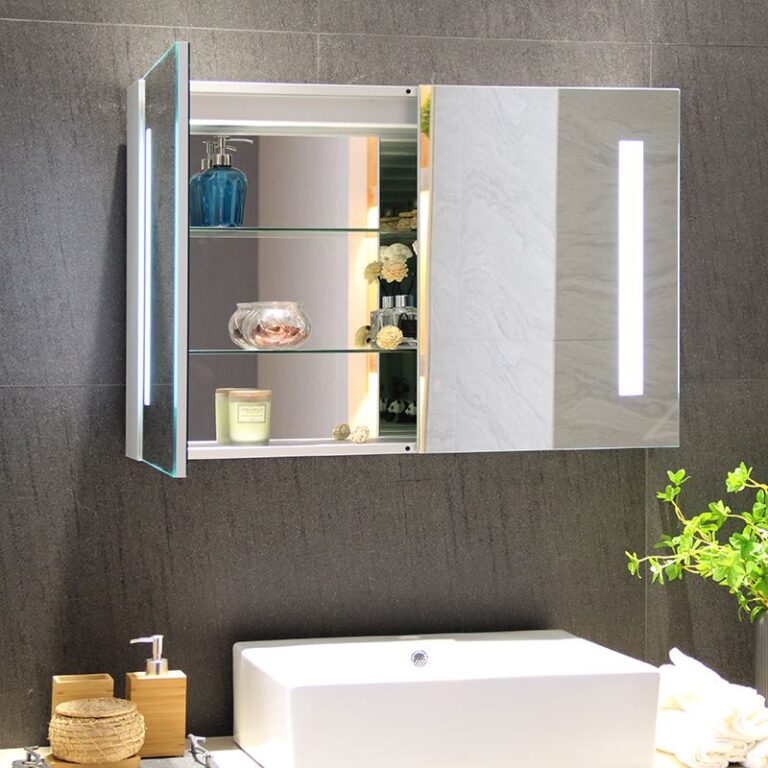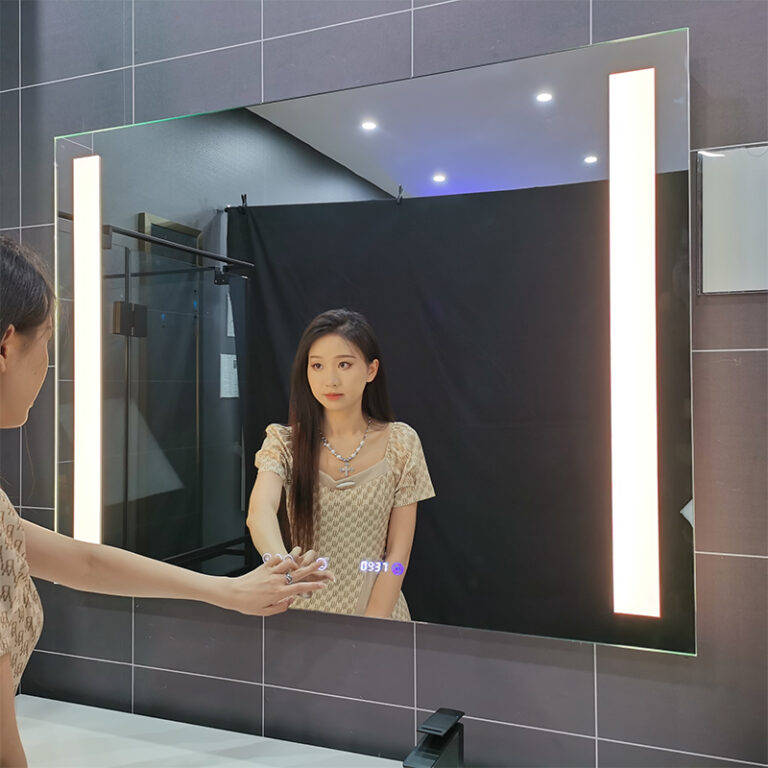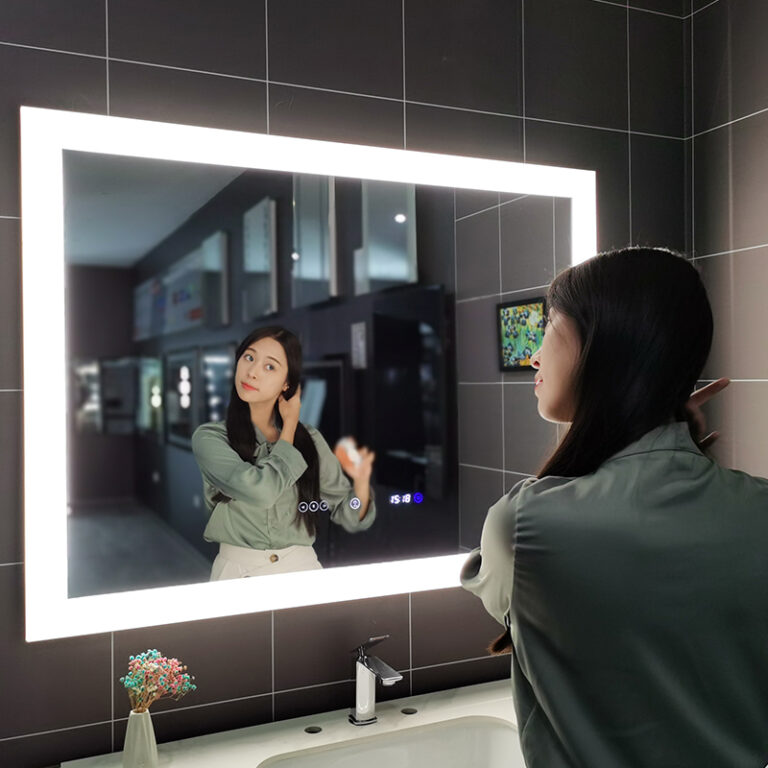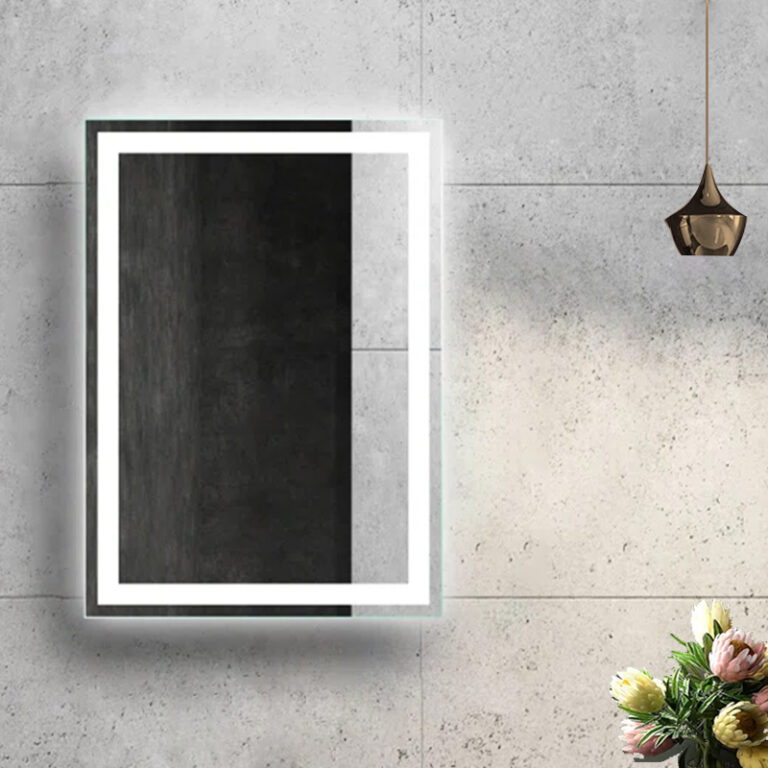LED mirrors are mirrors equipped with energy-efficient LED lights, and are commonly used in bathrooms, bedrooms, and luxury spaces for their modern design and functions. The construction, components, and quality of the mirror heavily influence its price, which can range from budget-friendly to premium options.
Structure
The structure of an LED mirror plays a critical role in determining its durability and price. There are two main types of structures: open and enclosed back panels.
- Open Structures: These mirrors often have exposed power supply accessories on the back. While this design reduces manufacturing costs, it compromises waterproofing and life. They are less durable and harder to repair, making them a more affordable but less reliable option.
- Enclosed Back Panels: High-end LED mirrors feature enclosed iron or aluminum back panels. This design protects internal components, ensures better waterproofing, and allows for easy disassembly and repair. Though more expensive, this structure guarantees durability and a longer service life of 5–7 years.
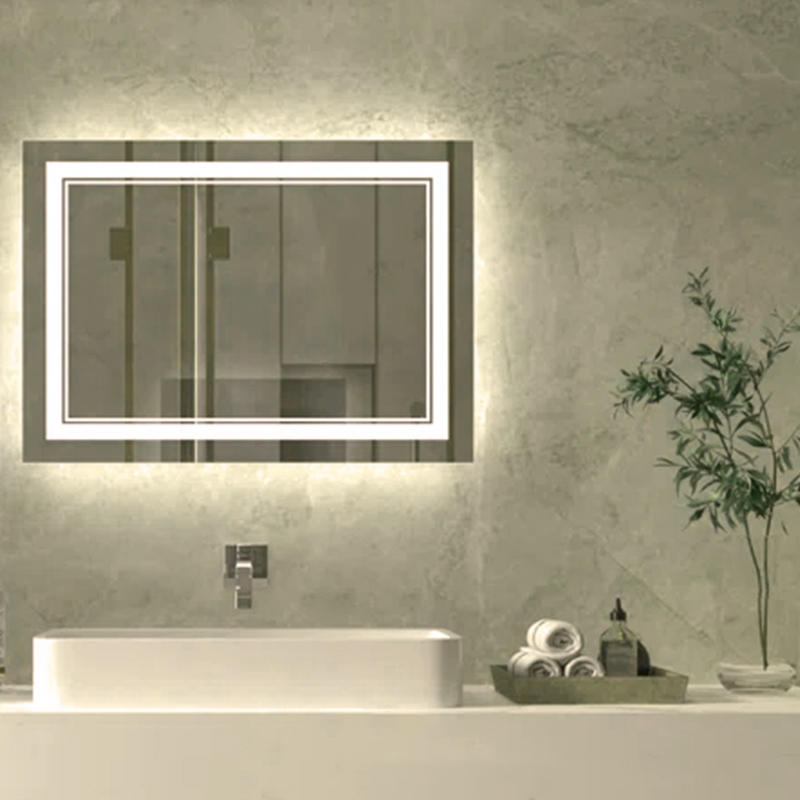
Accessories
Accessories are another critical factor that significantly affects the price of LED mirrors. The quality of components such as drivers, defogger pads, and other electrical parts determines the mirror’s performance.
- Certified Accessories: High-quality LED mirrors often use accessories with certifications like UL, CE, or cUL. These certifications ensure that the components meet stringent safety and performance standards. For instance, certified drivers provide stable power, while branded defogger pads like BAGEN ensure clear visibility even in steamy conditions. These features come at a higher cost but add immense value.
- Non-Certified Accessories: Cheaper LED mirrors may use uncertified or low-grade accessories. These components often fail prematurely, leading to issues like flickering lights, insufficient heating for defogging, or even safety hazards. While these mirrors might be budget-friendly, their low-quality parts can result in frequent repairs or replacements.
LED Strip Quality
The LED strips embedded in the mirror are one of its most defining features. However, not all LED strips are created equal, and their quality directly impacts the price and performance of the mirror.
- High-Quality LED Strips: Premium mirrors use advanced LED strips like the 2835 series, which feature 120 beads per meter and provide over 100 lumens per watt. These strips are more efficient, offer consistent brightness, and have a lifespan of up to 50,000 hours. The use of a PVC transparent pipe cover enhances waterproofing and durability.
- Low-Quality LED Strips: Cheaper mirrors often use strips with 60 beads per meter, producing less brightness and a shorter lifespan of around 10,000 hours. These strips lack proper waterproofing and cooling mechanisms, making them prone to overheating and failure.
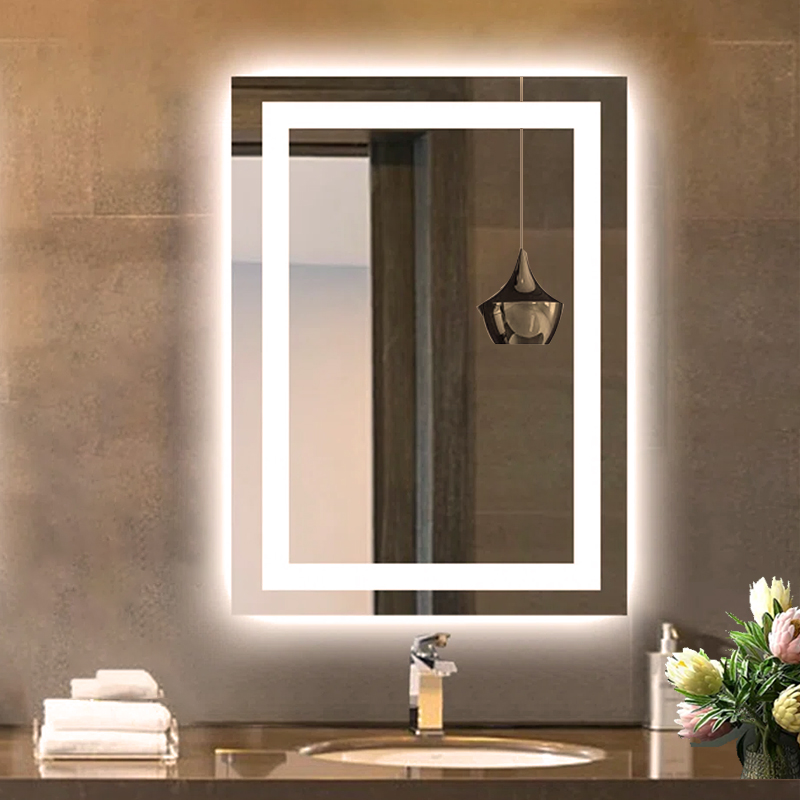
Packaging and Transportation
Another factor that influences the price of LED mirrors is the packaging. High-quality mirrors are packed with care to prevent damage during transportation, which adds to their cost.
- Premium Packaging:Expensive LED mirrors often include multiple layers of protection, such as a combination of polyfoam, protective film, corner protectors, and a sturdy carton. These mirrors may even be secured on pallets for additional safety during shipping. This ensures that the product reaches the customer in perfect condition.
- Basic Packaging: Budget-friendly mirrors may skimp on protective layers, increasing the risk of damage during transit. Scratches, broken edges, or internal faults can often result from inadequate packaging.
The price difference in LED mirrors comes down to factors like structure, accessories, LED quality, and packaging. While budget-friendly options may save money upfront, they often compromise on durability, safety, and performance. High-quality LED mirrors, though expensive, provide long-term value through superior design, certified components, and construction.

